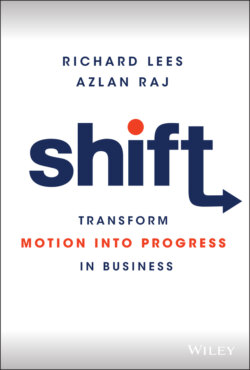Читать книгу Shift - Richard Lees - Страница 24
Rich's take Can you help us improve, please?
ОглавлениеI've been a customer with Harry's, which provides a razor blade subscription service, for some time, and at Christmas the company emailed me about a special edition razor it was offering. It wasn't expensive at £24, and for an extra £10 I had the option of having it engraved.
I thought an engraved razor would make a nice gift for my son, so I ordered one. When it arrived, my first thought was that my order was wrong because all I could see was “Harry's” written on the top of the razor. Then I realised that my son's initials were engraved on the bottom of the handle, and the engraving was so faint I could barely read it.
It's fair to say I was disappointed, so I sent Harry's an email, explaining my issues with what I'd received. This was at 8 p.m. on a Thursday night. Very quickly, I received a reply from a lady who told me her name was Sunny. She apologised and told me that the money was already on its way back to my account. She also asked if I could take a photo of the engraving and send it to the company so that it could improve its engraving process.
Shortly after this exchange, I received another email asking me to rate Sunny out of five. I rated her five out of five. I then received another email that said: “Thanks for rating Sunny five out of five. What would you do for Sunny? Buy her a beer, give her a day off, or send her on a vacation?” All of this happened at 8 p.m. on a Thursday night for a £34 product.
Her response to my complaint was driven by the principles in that business because there is no way that she would have had a specific process to deal with a complaint about a faint engraving on one of the company's razors.
Compare and contrast that example about Harry's razors with another experience Rich had with a very different brand at a similar time. He wanted to test drive an £80 000 car from a luxury brand in preparation for an automotive presentation, so he contacted two dealers on a Sunday night to book his test drive. One dealer got in touch with him by lunchtime on Tuesday, and he's still waiting to hear from the other dealer he contacted.
That's a stark difference. Harry's solved a problem with a £34 product within minutes at 8 p.m. on a Thursday night, but a luxury brand, at best, took 1.5 days to respond to a request for a test drive and, at worst, didn't respond at all.
As a leader, selling the vision you have for your company goes hand in hand with embedding those core principles in the business. To get buy-in from not only everyone who works for you, but also your customers, you need to very clearly paint this vision from the outset. Without having clarity over this vision, you will also struggle to set the direction for the business.
“The best way I've found to open that aperture – without losing the focus – is to bring together a data-informed narrative that includes signals on brand relevance and saliency, consumer engagement, where consumer trends are going, along with quantitative marketing attribution (imperfect as it may be). Marketers are fundamentally storytellers, and it is incumbent upon us to shape a more nuanced story of what drives short- and longer-term brand success. Then, it's all about having a CEO and board who can take that in, and believe in it too.”
Marisa Thalberg, EVP, Chief Brand and Marketing Officer, Lowe's
Look at the 3M example that we shared earlier in this chapter. Board members clearly set the vision for the company when they decided to focus on knowledge rather than products. This key principle translates into cultural behaviours within the business that filter through to every person who works for and with you. In starting here, you're ingraining this behaviour and empowering your employees to start building a culture that reflects what you're trying to achieve. It's like a waterfall effect and it all starts from effective communication from leadership.
